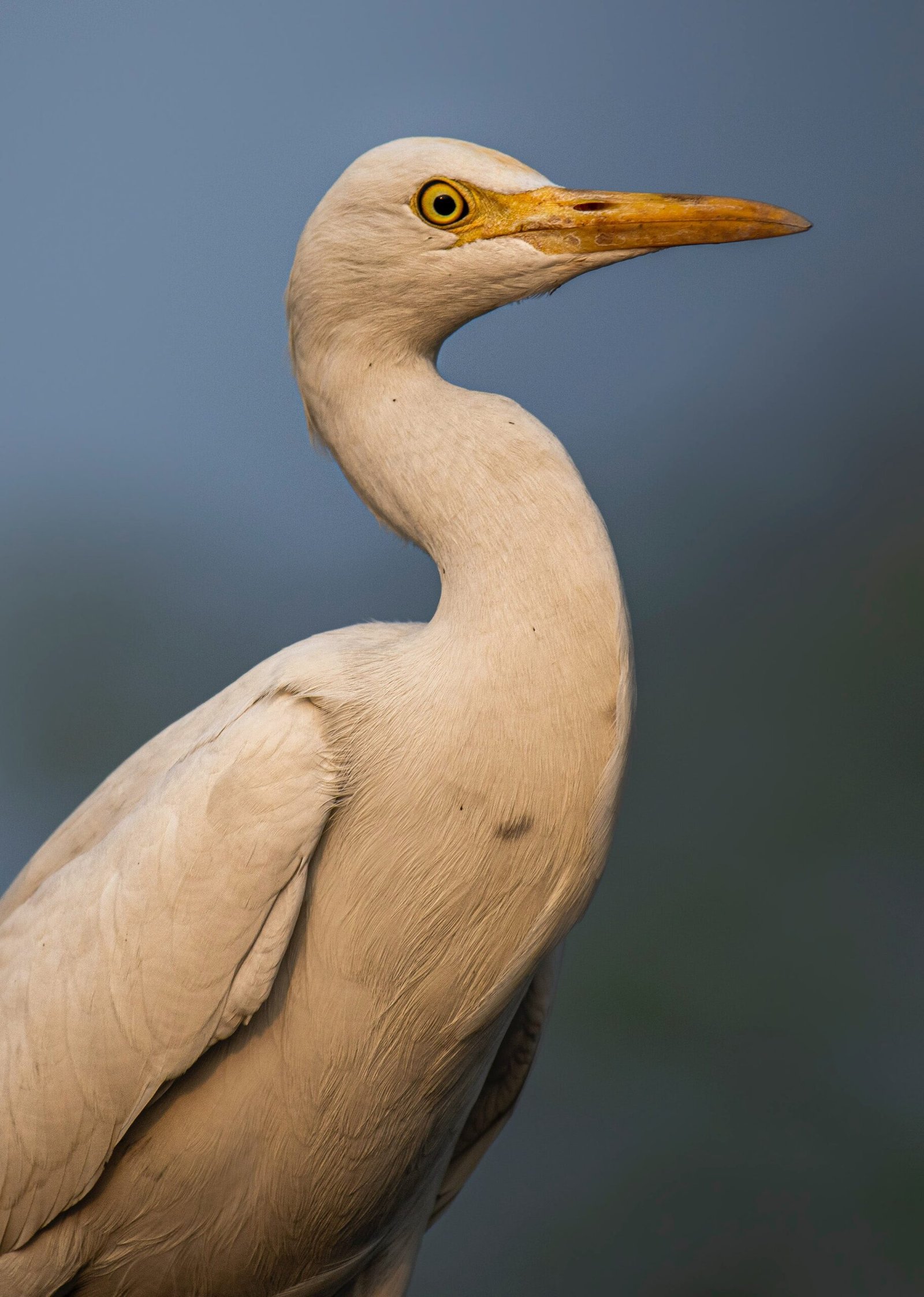So you’ve found yourself fascinated by the mesmerizing beauty of the Brazilian pink bloom tarantula and decided to keep one as a pet. Congratulations on embarking on this exciting journey! However, before you can bring this incredible creature into your home, you need to create a suitable environment that mimics its natural habitat. In this article, we will explore the essential elements needed to replicate the Brazilian pink bloom tarantula’s natural environment in captivity, ensuring its comfort and well-being. Let’s dive into the world of tarantulas and discover how you can provide the perfect sanctuary for your new eight-legged friend.

Temperature and Humidity
Research Optimal Temperature and Humidity Levels
When it comes to creating a suitable environment for your Brazilian Pink Bloom Tarantula in captivity, it is crucial to research and understand the optimal temperature and humidity levels. These factors play a significant role in the tarantula’s overall health and well-being. The Brazilian Pink Bloom Tarantula is native to the tropical rainforests of Brazil, where it experiences relatively high temperatures and humidity. Therefore, to replicate its natural habitat, you should aim to maintain a temperature range of 75-85°F (24-29°C) and a humidity level of 70-80%.
Use Thermometers and Hygrometers
To ensure that you are providing the appropriate temperature and humidity for your tarantula, it is essential to use thermometers and hygrometers. Place a reliable thermometer in the enclosure to monitor the temperature accurately. Similarly, a hygrometer will help you measure and maintain the correct humidity levels. By implementing these tools, you can regularly monitor and adjust the temperature and humidity to create an optimal environment for your Brazilian Pink Bloom Tarantula.
Provide Heating and Cooling Options
Maintaining a consistent temperature within the recommended range is crucial for the well-being of your tarantula. During colder months, you may need to provide additional heating options such as an under-tank heating pad or a heat emitter. These can help maintain the desired temperature in the enclosure. On the other hand, if the temperature rises above the recommended range, consider installing a fan or using a small air conditioner to provide adequate cooling. The goal is to ensure that your tarantula remains comfortable regardless of the external conditions.
Implement a Mist System
In addition to temperature, humidity is a vital element to replicate the natural environment of the Brazilian Pink Bloom Tarantula. One effective way to create a suitable humidity level is by implementing a mist system. This can be achieved by using a fine mist spray bottle to periodically spray a mist of water into the enclosure. The mist will increase the humidity while also providing a source of drinking water for your tarantula. Be cautious not to oversaturate the enclosure, as this can lead to mold or other harmful conditions. Regularly monitor the humidity levels and adjust the misting frequency accordingly. Remember, maintaining the right balance of temperature and humidity is crucial for your tarantula’s health and overall well-being.
Enclosure Setup
Choose an Appropriate Enclosure Size
Creating a comfortable living space for your Brazilian Pink Bloom Tarantula is essential for its overall health and happiness. When selecting an enclosure, it is crucial to choose a size that allows for adequate movement and provides enough space for the tarantula to dig burrows or construct webs. A general guideline is to provide a terrarium with a minimum size of 10-20 gallons, depending on the size of your tarantula. Remember, providing ample space is vital to mimic its natural habitat and ensure a stress-free environment.
Use a Substrate Mimicking Natural Habitat
One essential aspect of replicating the natural environment of the Brazilian Pink Bloom Tarantula in captivity is using a suitable substrate. The substrate is the material placed at the bottom of the enclosure, mimicking the tarantula’s natural habitat floor. For this species, a blend of soil, sand, and organic matter, such as coconut fiber or peat moss, can create an ideal substrate. This mixture provides a soft and moist surface, allowing the tarantula to burrow and create tunnels as it would in the wild.
Incorporate Hiding Spots and Decorations
Creating hiding spots and adding decorations to the enclosure is crucial for your tarantula’s mental and physical well-being. Brazilian Pink Bloom Tarantulas are naturally shy and reclusive, spending a significant amount of time hiding. You can replicate their natural environment by adding various objects such as rocks, pieces of bark, or hollow logs, creating multiple hiding spots throughout the enclosure. These hiding spots will provide a sense of security and make your tarantula feel safe and comfortable.
Provide Climbing Structures
In their native habitat, Brazilian Pink Bloom Tarantulas are skilled climbers, often found on branches or tree trunks. Replicating this aspect of their natural environment is important for their physical stimulation and exercise. By adding climbing structures such as branches or vines to the enclosure, you provide opportunities for your tarantula to engage in natural behaviors. Ensure that these structures are securely placed and can support the weight of your tarantula to prevent any accidents or injuries.
Consider Live Plants
Another way to enhance the natural environment of your Brazilian Pink Bloom Tarantula’s enclosure is by incorporating live plants. Live plants not only add beauty and aesthetics to the enclosure but also provide additional hiding spots and improve air quality. Research which plants are safe for tarantula habitats and choose those that thrive in the tropical rainforest environment. Not only will the live plants make the enclosure more visually appealing, but they will also contribute to a more balanced and natural ecosystem for your tarantula.
Lighting
Mimic Natural Day and Night Cycles
Providing appropriate lighting is crucial for maintaining a healthy environment for your Brazilian Pink Bloom Tarantula. Tarantulas, like many other animals, have evolved to follow natural day and night cycles. During the day, they receive light, while at night, they experience darkness. To replicate this natural rhythm, it is important to provide a consistent lighting schedule. Use a timer to ensure that your tarantula has 10-12 hours of light during the day and 12-14 hours of darkness at night. This will help regulate its biological clock and promote natural behaviors.
Use Full-Spectrum Lighting
When choosing lighting for your tarantula enclosure, opt for full-spectrum lighting. Full-spectrum bulbs mimic natural sunlight by emitting a balanced spectrum of light, including both visible and ultraviolet (UV) wavelengths. This type of lighting provides the necessary UV radiation for your tarantula’s overall health and enables the synthesis of vitamin D3, which is essential for calcium metabolism. Be sure to research and invest in reputable full-spectrum bulbs specifically designed for reptiles or invertebrates.
Avoid Excessive Brightness
While providing the appropriate lighting is important, it is equally crucial to avoid excessive brightness in the tarantula’s enclosure. Brazilian Pink Bloom Tarantulas naturally live in the understory of the rainforest, where the lighting is subdued. Therefore, it is best to opt for dimmer light bulbs or provide indirect lighting to mimic their natural environment. Excessive brightness can cause stress and discomfort for your tarantula, ultimately impacting its overall well-being. Finding the right balance of lighting is key to creating a suitable environment for your pet.
Feeding
Research Natural Diet of Brazilian Pink Bloom Tarantulas
To ensure the overall health and well-being of your Brazilian Pink Bloom Tarantula, it is essential to research and understand its natural diet. Tarantulas in the wild primarily feed on live prey such as insects, small spiders, and even small vertebrates. Replicating their natural diet in captivity is crucial to meet their nutritional needs. Take the time to research and gather information on the specific prey items that are part of their natural diet in the wild.
Offer Live Prey or Pre-killed Options
When it comes to feeding your tarantula, there are two main options to consider: providing live prey or offering pre-killed options. Some tarantula owners choose to feed live insects, such as crickets or locusts, as they provide a more stimulating hunting experience for the tarantula. However, if you are uncomfortable with live prey or concerned about the insects potentially harming your pet, pre-killed prey is a viable alternative. You can purchase pre-killed insects or even freeze and thaw them before feeding, ensuring that they are safe and free from any potential parasites or diseases.
Maintain a Balanced Diet
While it is important to provide a varied and species-appropriate diet for your Brazilian Pink Bloom Tarantula, it is equally crucial to maintain a balanced nutritional intake. Ensure that the prey items you offer are of appropriate size and contain essential nutrients. Multivitamin and calcium supplements can also be beneficial in ensuring your tarantula receives the necessary vitamins and minerals. Consulting with a veterinarian specializing in exotic pets can provide valuable guidance on creating a balanced diet for your tarantula.
Provide Water Source
Just like any other living creature, tarantulas require access to fresh, clean water. In their natural habitat, they obtain water from various sources such as raindrops or small pools. You can replicate this by providing a shallow water dish in the enclosure. Ensure that the water dish is cleaned and refilled regularly to maintain hygiene. Additionally, you can also use a spray bottle to mist the enclosure, providing your Brazilian Pink Bloom Tarantula with a source of hydration to drink from. Regularly monitor and ensure that your tarantula has access to fresh water at all times.

Maintaining Cleanliness
Regularly Remove Waste and Uneaten Food
Maintaining cleanliness within your Brazilian Pink Bloom Tarantula’s enclosure is crucial for its health and hygiene. Take the time to regularly remove any waste, such as feces or uneaten food, from the enclosure. Leaving waste or decaying prey items can lead to bacterial or fungal growth, resulting in harmful conditions for your tarantula. A clean environment will help minimize the risk of infections or diseases and create a more pleasant living space for your pet.
Clean and Disinfect the Enclosure
Periodically, it is important to deep clean the tarantula’s enclosure to ensure optimal cleanliness. Remove all substrate material, decorations, and any other items from the enclosure. Thoroughly clean these components using a mild detergent, ensuring that all debris and potential contaminants are removed. Rinse everything carefully with clean water to eliminate any residue from the detergent. Allow all components to dry completely before reintroducing them into the enclosure. Creating a clean and sanitized living space promotes a healthy environment for your tarantula.
Avoid Using Harsh Chemicals
When cleaning your tarantula’s enclosure, it is important to avoid using harsh chemicals or cleaning agents. Tarantulas are highly sensitive to chemicals, and exposure to strong cleaners can be harmful or even fatal to them. Stick to mild detergents or soaps that are safe for use around pets. Ensure that all cleaning agents are rinsed thoroughly to remove any traces before reintroducing your tarantula to its enclosure. Prioritizing the use of safe and natural cleaning methods will protect your tarantula’s health and well-being.
Monitoring Health and Behavior
Observe Eating Patterns and Appetite
As a responsible tarantula owner, it is essential to monitor your Brazilian Pink Bloom Tarantula’s eating patterns and appetite. In captivity, tarantulas can demonstrate variations in appetite due to factors such as temperature, humidity, stress, or molting. Regularly observe and note any changes in your tarantula’s eating patterns. A consistently healthy appetite is a positive indication of your pet’s overall well-being.
Monitor Molting Process
Molting is a natural process for tarantulas, during which they shed their old exoskeleton to allow for growth. It is crucial to observe and monitor the molting process of your Brazilian Pink Bloom Tarantula. Before molting, tarantulas may exhibit changes in behavior, such as reduced appetite or increased seclusion. Provide a quiet and undisturbed environment during this time, ensuring that the tarantula has sufficient space and appropriate humidity levels for successful molting. If you notice any complications during the molting process, seek veterinary care promptly.
Watch for Signs of Stress or Illness
Regularly monitor your Brazilian Pink Bloom Tarantula for any signs of stress or illness. These signs can include excessive hiding, loss of appetite, lethargy, abnormal posturing, discoloration, or abnormal webbing. Any significant changes in behavior or appearance can indicate potential health issues. If you notice any concerning signs, it is essential to take appropriate action to ensure the health and well-being of your tarantula.
Seek Veterinary Care When Needed
While tarantulas are generally hardy creatures, it is important to remember that they are also living beings that can experience health problems. If you observe persistent changes in appetite, behavior, or notice any visible abnormalities, it is crucial to seek veterinary care from a qualified exotic animal veterinarian. They will have the expertise to diagnose and treat any potential health issues that may arise in your Brazilian Pink Bloom Tarantula. Prompt veterinary care can make a significant difference in your tarantula’s overall health and quality of life.

Avoiding Excessive Handling
Limit Interaction and Handling
Brazilian Pink Bloom Tarantulas are not known for their social nature and, in general, prefer to be left alone. Excessive handling can be stressful for your tarantula and may lead to defensive behavior or injuries. Limit your interaction and handling to a minimum, allowing your tarantula to feel safe and secure in its enclosure. Remember, observing your tarantula’s natural behaviors can be just as fascinating and rewarding as handling it.
Minimize Stressful Situations
When it comes to minimizing stress in your Brazilian Pink Bloom Tarantula, it is crucial to create and maintain a calm and quiet environment. Avoid sudden loud noises, vibrations, or any other disturbances that can startle or stress your tarantula. Additionally, minimize any changes to the enclosure’s setup unless necessary, as frequent disruptions can cause stress and anxiety. By providing a peaceful and stable environment, you can help ensure the well-being of your tarantula.
Learn Proper Handling Techniques
While limiting handling is recommended for most tarantulas, there may be situations where handling becomes necessary. It is important to learn and practice proper handling techniques to minimize the risk of injury. Always ensure that your hands are clean and free from any lotions, oils, or other substances that may be harmful to your tarantula. Gently coax the tarantula onto a flat hand or use appropriate handling tools if needed. Remember to be patient and calm, and avoid making sudden movements that may startle the tarantula. By following proper handling techniques, you can ensure the safety of both yourself and your Brazilian Pink Bloom Tarantula.
Providing Suitable Airflow
Choose Ventilated Enclosure
Proper airflow is essential in creating a healthy and comfortable environment for your Brazilian Pink Bloom Tarantula. When selecting an enclosure, ensure that it provides adequate ventilation. An enclosure with vents or mesh openings will allow for proper air circulation, preventing the buildup of stagnant air and excessive moisture. Good ventilation will help regulate temperature and humidity levels, creating a suitable environment for your tarantula.
Monitor Air Circulation
Even with an enclosure that provides adequate ventilation, it is important to monitor the air circulation within the enclosure. Ensure that there are no areas of stagnant air or poor circulation, as these can lead to the growth of mold or mildew. Strategically placing fans or vents around the enclosure can help improve airflow and prevent any potential issues. Regularly check for proper air circulation and make adjustments as needed to promote a healthy environment for your tarantula.
Avoid Drafts
While proper air circulation is important, it is equally crucial to avoid drafts within your tarantula’s enclosure. Brazilian Pink Bloom Tarantulas are sensitive to temperature fluctuations and can be negatively affected by drafts. Avoid placing the enclosure near windows, doors, or areas with direct airflow from fans or air conditioning vents. Drafts can cause stress or illness to your tarantula, so it is important to maintain a consistent and stable temperature within the enclosure.

Replicating Natural Substrate
Research Native Substrate Materials
To accurately replicate the natural environment of the Brazilian Pink Bloom Tarantula, it is essential to research and understand the native substrate materials found in their natural habitat. These materials play a vital role in maintaining proper moisture levels and providing a suitable surface for digging or burrowing. By replicating the native substrate, you can create a familiar and comfortable environment for your tarantula.
Use a Blend of Soil, Sand, and Organic Matter
Once you have gathered information about the native substrate materials, it is time to mimic them in your tarantula’s enclosure. A suitable substrate can be created by using a blend of soil, sand, and organic matter. This combination provides a soft and moisture-retaining surface, allowing your tarantula to dig and burrow as it would in its natural habitat. Be mindful of the moisture content, as excessive moisture can lead to mold or other harmful conditions. Regularly monitor and adjust the substrate’s moisture level to ensure the well-being of your Brazilian Pink Bloom Tarantula.
Maintain Proper Moisture Level
Maintaining an appropriate moisture level within the substrate is crucial for your tarantula’s health. Brazilian Pink Bloom Tarantulas prefer a slightly moist substrate but will also require a drier section for molting purposes. Achieve this by misting the enclosure periodically and adjusting the misting frequency based on the humidity level. Additionally, consider creating a designated wet area within the enclosure by focusing the misting in one section or using a small water dish to provide localized humidity. Regularly monitor and adjust the substrate’s moisture level to ensure a comfortable and suitable environment for your tarantula.
Replicating Natural Surroundings
Research Natural Habitat
To create an environment that closely resembles the natural surroundings of the Brazilian Pink Bloom Tarantula, it is important to research and understand its native habitat. Observe the rainforests of Brazil, paying attention to the specific plants, trees, and overall ecosystem that make up its natural surroundings. By gaining knowledge about its habitat, you can make informed decisions when recreating it in the tarantula’s enclosure.
Create a Tropical Rainforest Environment
The Brazilian Pink Bloom Tarantula is a native species of the tropical rainforests in Brazil. Therefore, recreating a tropical rainforest environment is essential to replicate the natural surroundings of your tarantula. You can achieve this by incorporating appropriate decor, such as artificial plants, leaves, branches, or pieces of bark, into the enclosure. These elements will help create a lush, dense, and visually appealing environment that closely resembles the tarantula’s natural habitat.
Incorporate Natural Elements
In addition to artificial decor, consider incorporating natural elements into your tarantula’s enclosure. This can include items such as small rocks, pieces of driftwood, or dried leaves collected from safe and pesticide-free areas. Not only will these natural elements enhance the aesthetics, but they will also provide additional hiding spots and contribute to a more authentic and natural environment. Just ensure that any natural elements introduced into the enclosure have been cleaned and sanitized to prevent the introduction of any potentially harmful substances.
In conclusion, replicating the natural environment of the Brazilian Pink Bloom Tarantula in captivity requires careful consideration and attention to various factors. By researching and implementing the optimal temperature and humidity levels, providing an appropriate enclosure setup, using suitable lighting, offering a balanced diet, maintaining cleanliness, monitoring health and behavior, avoiding excessive handling, ensuring suitable airflow, replicating natural substrate and surroundings, you will be creating a comfortable and natural habitat for your Brazilian Pink Bloom Tarantula. Remember, prioritizing the well-being of your tarantula and striving to replicate its natural environment will lead to a happy and healthy pet.

